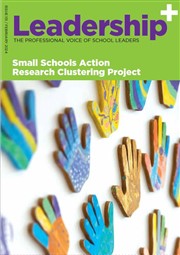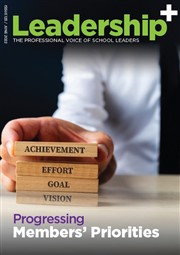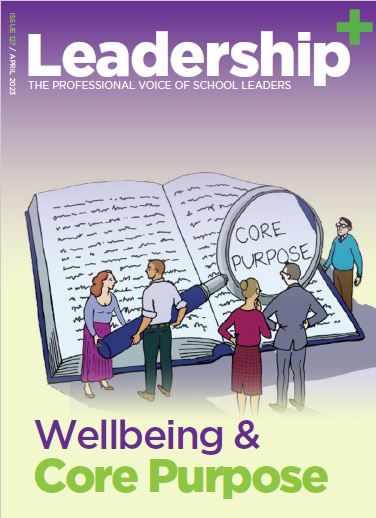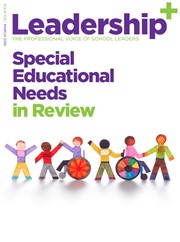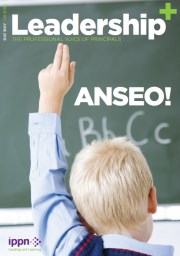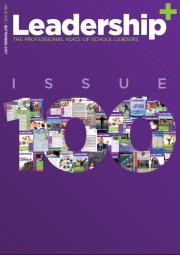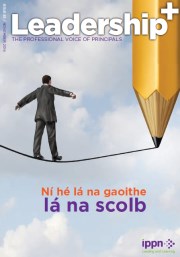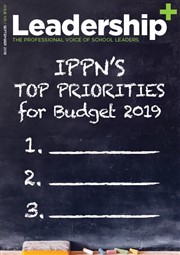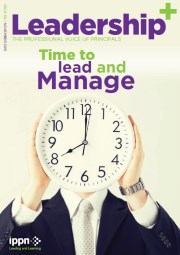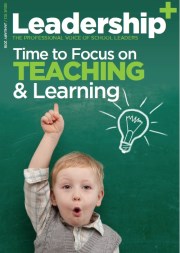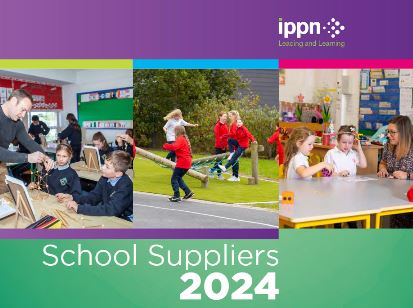E-Scéal 55: Special Education Needs - Supporting Principals
- Published: 06 October 2004
In response to the many queries received by the IPPN Support Office relating to changes in SEN resourcing, a group of Principals have prepared professional guidance on this topic for IPPN members. I trust it will be of assistance to you and your staff in managing SEN in your school.
Is mise le meas,
Seán Cottrell
Director
Special Education Needs - Professional Guidance
Overview
Circular 09/04 raised more questions than it answered concerning the delivery of resources to children with SEN. Last July, the IPPN Executive raised 28 questions with the Minister in an effort to seek clarification for principals. Minister Dempsey responded to our letter in September and a meeting was arranged with senior officials of the DES for 7th October. It is now obvious that the new 'weighted system' will not come fully into practice, especially with regard to staffing, until September 2005. Meanwhile we are in a transition phase in the delivery of resources to children with SEN in our schools. In order to help manage this transition phase for the year ahead, IPPN is offering guidelines with suggested models of good practice that are already employed in many schools.
Change of Policy
Circular 24/03 heralded the end of a fragmented approach to the organisation of SEN in schools. We are heading towards a greater flexibility for each school as they explore the model which best suits their circumstances. Depending on school size, type and circumstances, a range of approaches should be considered and evaluated.
It is important to emphasise that the primary responsibility for a child with SEN rests ultimately with the class teacher. Central to this responsibility is the IEP which is an education plan drawn up collaboratively by the class teacher, the child's parents and the 'support teacher'. The implementation of the child's IEP depends on a high degree of teamwork and collaboration with all concerned. The Board of Management should be informed how the Support Team proposes to deliver its SEN service in the school. As a general guide a clear strategy for ongoing communication and consultation between parents, class teacher and the support team will ensure a satisfactory outcome for all concerned.
Managing Change
The principal and staff are in the best position to identify how existing school resources can best be utilised to meet the needs of their pupils. If not already done, it is essential to facilitate a whole staff discussion on the contents of Circulars 24/03, 09/04 and 13/04. Mainstream class teachers, Learning Support Teachers, Resource Teachers for SEN, Resource Teachers for Travellers and Resource Teachers for Language Support, must pool their experience and expertise to interpret these circulars as they apply to the school. The LST, RTSEN, RTT and the RTLS must think of themselves as a support team to work with and support classroom teachers and parents in the teaching of children with SEN. In smaller schools this 'Support Team' can only be possible if the staffs of schools that are sharing teachers, work together as a defined cluster to plan collectively and meet this challenge.
Models of Good Practice
- Priority to be given to SEN for staff meetings and for School Development Planning days, to enable a whole school discussion on the implications of Circulars 24/03, 09/04 and 13/04.
- Although the roles of the LST, RTSEN are not being officially merged in this school year, moving towards merging of these positions (coupled with RTTs and RTSLs where applicable) could facilitate a more cohesive approach to delivering an SEN service. These roles would effectively become the schools SEN Support Team. Whilst Circular 09/04 refers to the role of Special Education Teacher (SET), it seems that this may not be the definitive role title. Perhaps the word 'support' should be included in the title to maintain clarity relating to the primary responsibility of the class teacher.
- Where there is more than one 'Support Teacher' in a school, each teacher in the team might be assigned to work with a specific class or group of classes. This will prevent a class teacher having to communicate and work with two or more 'Support Teachers'
- In smaller schools where both the Learning Support Teacher and the Resource Teacher are shared, schools might benefit if one 'Support Teacher' provided both services in a specific school, reducing the need to travel and reducing the aforementioned disruption factor.
- Within the suggested models mentioned above the range of SEN intervention strategies outlined below should be considered. This list is not exhaustive:
- Merging the roles of Learning Support Teacher and the Resource Teachers.
- The class teacher and the 'Support Teacher' working with the whole class and a group within the class simultaneously.
- Team teaching - the Class Teacher and the 'Support Teacher' alternating roles to work with the whole class or the children with SEN.
- Traditional approach of one to one withdrawal child from the class.
- Group teaching for children who have similar SEN needs.
- Group teaching for personal development and life skills.
- Having developed a team approach to SEN services within a large school / cluster of small schools, there will be greater sharing of SEN experience and knowledge, the development of an SEN Resource Centre with expert information on various disabilities, teaching materials, software packages etc. A team approach will also eliminate the fragmentation and isolation often identified by RTSENs, LSTs etc.
- Where schools are working this year with an inadequate number of RTSENs / resource hours, children may be grouped appropriately with children who have similar SEN needs without compromising their designated number of hours.
In-School Management and SEN
Given the importance and responsibility associated with providing for children with SEN in schools today, it is essential that the management of SEN forms a central plank in the In-School Management team. Because the Principal's role is stretched so widely over many aspects of school administration and management, responsibility for managing and co-ordinating SEN (staffing, resourcing and communicating) should be delegated to another senior member of staff. The Educations for Persons with Special Education Needs Act 2004 empowers the Principal Teacher to delegate this function appropriately. In accordance with established good practice both in Ireland and Internationally, responsibility for SEN should ideally be a key part of the Deputy Principal's role. This would ensure that SEN issues do not get compromised by the competing priorities which are the reality for Principals. It will also signify the importance of SEN by allocating its responsibility to the next most senior member of staff.
Anecdotal evidence suggests that many schools have various posts of responsibility designated since before 1999 and SEN is not included. A possible consequence of this is the failure to apply In-School Management capacity to such a high priority management area. Where such a situation exists, the Principal should advise the board and staff that ISM responsibilities should be reviewed immediately.






